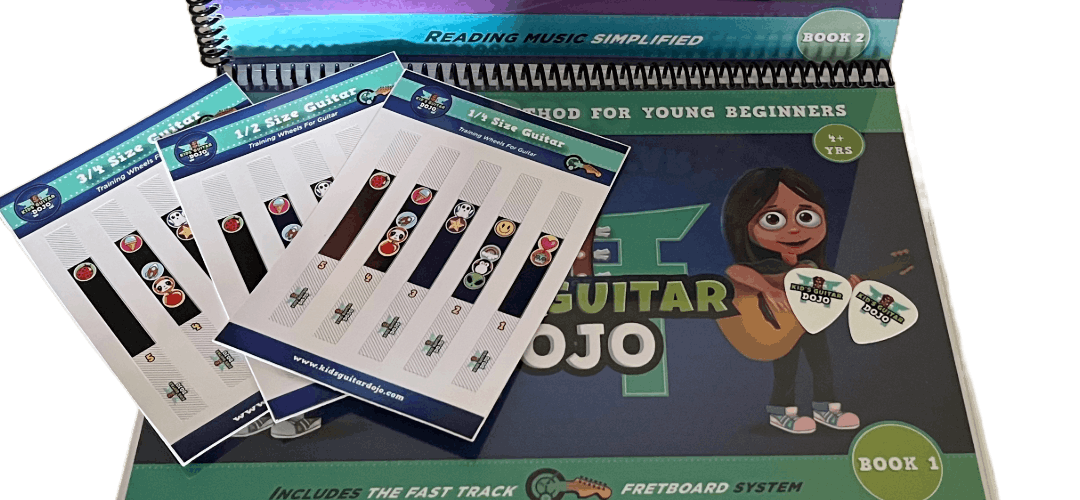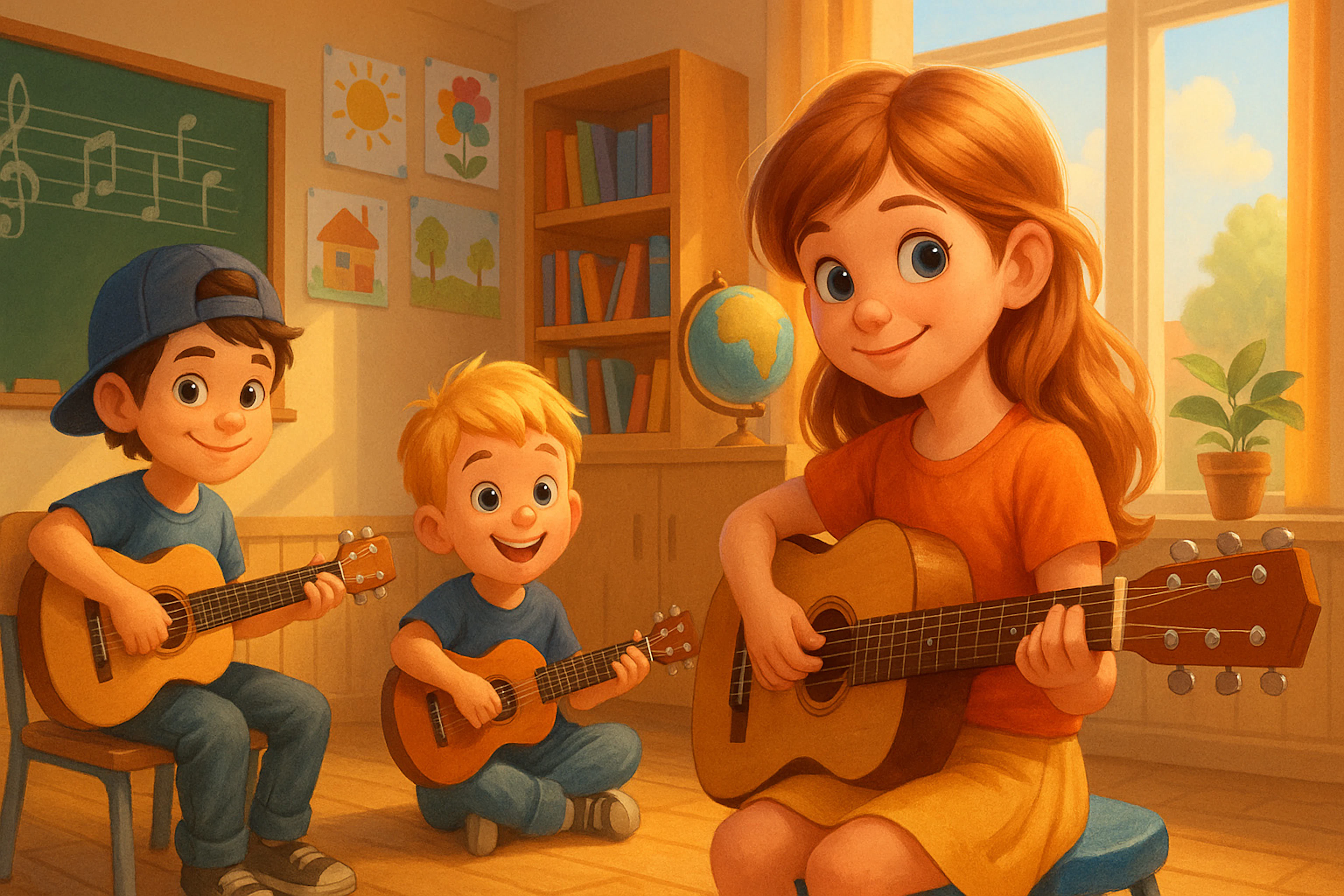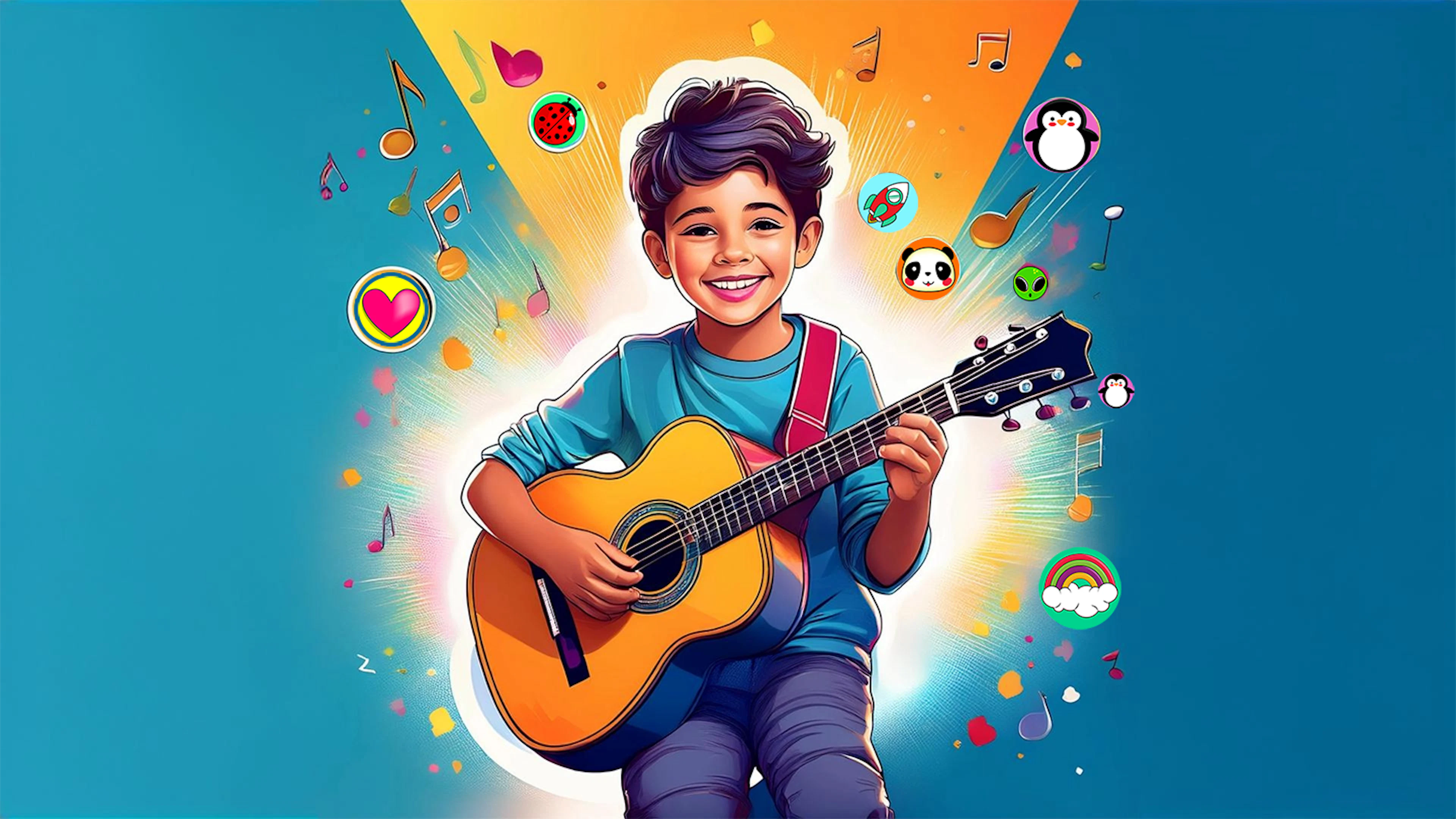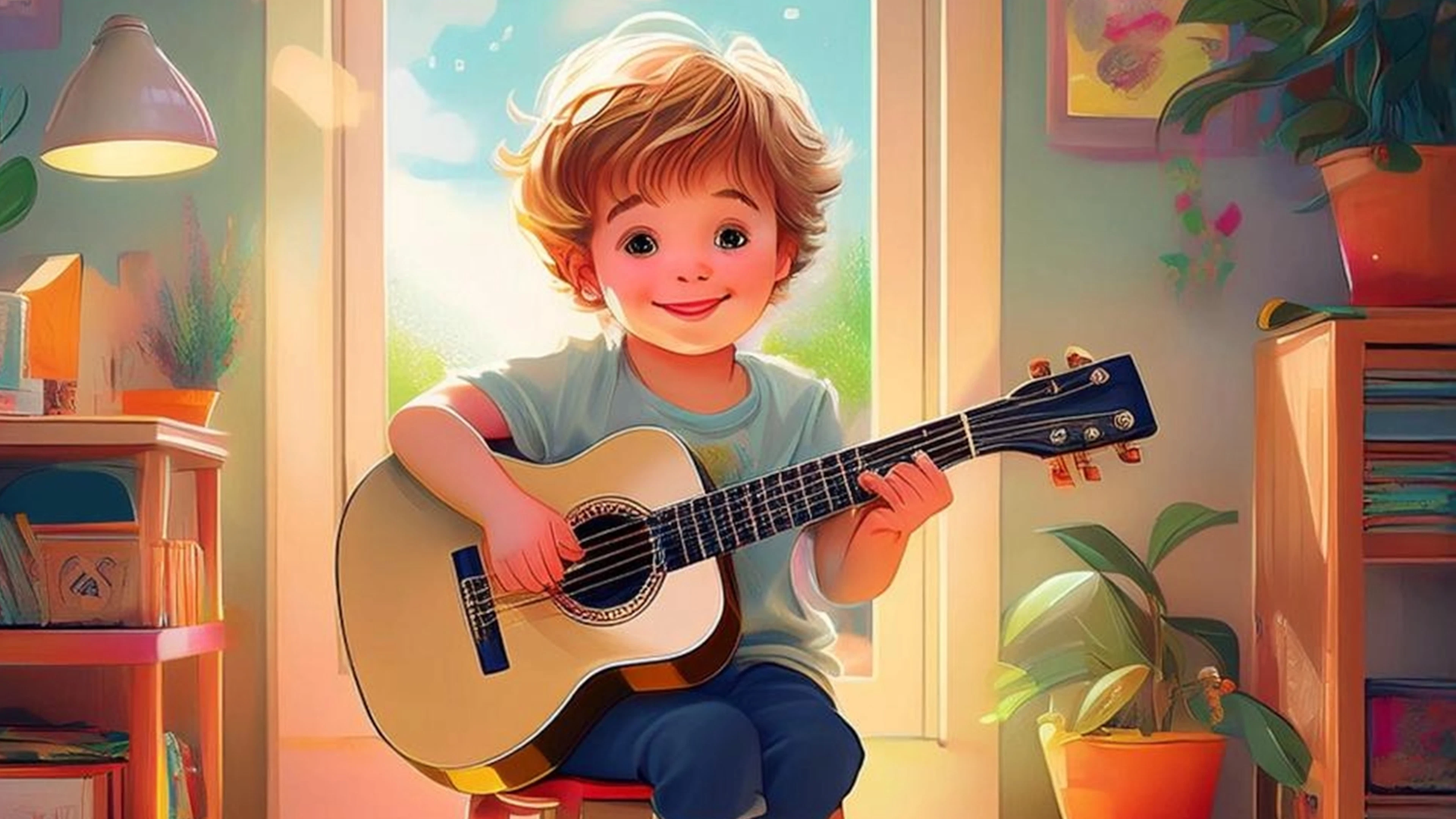How to Teach a 3-Year-Old to Play Guitar: A Complete Parent's Guide
Teaching guitar to a three-year-old might seem like daunting task, but research shows that early musical education creates powerful developmental benefits. With the right approach, tools, and expectations, you can successfully introduce your toddler to the wonderful world of guitar.

Is 3yrs Of Age Too Young? Setting the Stage for Early Musical Exploration
Some might argue that three is too young to begin learning an instrument, and for certain children, waiting another year or two could be beneficial. However, early exposure to music doesn’t have to mean formal lessons or rigid practice schedules. Instead, it can be about fostering curiosity and creating an environment where music feels fun and accessible.
Parents can play a pivotal role in this process by introducing music into the home in simple, engaging ways. For instance, having a child-sized guitar available can spark natural interest—just as Keith Richards recalls being tempted by his grandfather’s guitar hanging just out of reach on the wall. Similarly, exposing your child to live music performances or a friend who plays guitar can ignite their fascination.
Even playing guitar-based music at home or in the car—whether it’s The Wiggles or your personal favourites—can inspire them and help them develop preferences. The key is exposure: making music a normal and enjoyable part of their world. Before diving into specific techniques for teaching guitar or choosing the right instrument, let’s explore why early musical education is so impactful.
The Power of Early Musical Education
Recent studies from leading music education researchers show that children who begin musical training before age four develop enhanced cognitive abilities that last throughout their lives. Dr. Sarah Johnson, a Pediatric Neurologist at Boston Children's Hospital, explains: "The neural pathways formed during early musical education create a foundation for enhanced learning across all subjects."
Check out this Ted Talk by Sarah
Music That Strengthens The Bond Between Mother and Child
Early guitar education specifically provides:
- Accelerated brain development in areas controlling motor skills
- Enhanced hand-eye coordination
- Improved pattern recognition abilities
- Stronger memory formation
- Advanced problem-solving capabilities
Scientific Support
Research from the University of California's Music Development Lab shows that children who begin musical instruction before age four demonstrate:
- 20% faster processing speed
- Enhanced memory capacity
- Superior problem-solving abilities
- Advanced language development
So theres some solid information and reasoning on the on benefits of early music exposure. Now let's look at this important next step
Selecting the Perfect First Guitar
Modern 1/4-size nylon string guitars have transformed early childhood guitar education, making it more accessible and enjoyable for young beginners. These guitars are specifically designed to meet the needs of small children, offering several key advantages:

The latest generation of children's guitars features:
- Lightweight construction: Perfectly suited for tiny bodies, allowing children to hold and play comfortably.
- Improved tuning stability: Ensures the guitar maintains its pitch, reducing frustration during practice.
- Soft nylon strings: Gentle on tender fingers, making it easier for young learners to press down on the strings without discomfort.
- Narrower neck width: Ideal for small hands, enabling easier chord transitions and finger placement.
- Professional-quality sound: Encourages practice by producing a pleasing tone that feels rewarding to play.
These guitars are an excellent choice for children aged 3 to 5 years old. The soft nylon strings and smaller size make them beginner-friendly while still providing a genuine musical experience—not just a toy. They are also affordable, so parents don’t need to worry about making a significant financial investment upfront. Unlike high-end brands like Fender or Gibson, these guitars are practical and durable while remaining functional and tunable.
For parents looking to purchase one, Artist Guitars offers a great selection of 1/4-size models available in Australia, the USA, and the UK.
These instruments provide young learners with a solid foundation to explore the world of guitar without breaking the bank.
For a more detailed look at selecting a guitar for kids check out our article here

The Kids Guitar Dojo Approach
Our innovative Fast Track Fretboard System, specifically designed for 1/4 size guitars, transforms how three-year-olds learn guitar. This unique system includes removable fretboard markers that create a visual learning path, making complex concepts accessible to young minds.

First Steps: The One-String Revolution
As demonstrated in our foundational lesson (available on the Kids Guitar Dojo YouTube channel), we begin with simple, engaging exercises using just one string. This approach builds confidence while developing crucial skills:
Rhythm Development for Young Guitarists
Teaching rhythm to a 3-year-old requires creative, engaging approaches that make learning feel like play. The Kids Guitar Dojo method introduces rhythm through simple, fun exercises that build fundamental skills.
This Doctor Rhythm class explains the basics of quarter notes and counting beats and bars.
Start with basic rhythm exercises:
- Simple counting games
- Hear the Rhythm Clap it Back
- Quiz questions
Progress Checkpoints
Look for these developmental signs:
- Can maintain steady beat for 4 counts
- Follows stop and start signals
- Distinguishes between fast and slow
- Shows excitement for rhythm games
Practice Tips
- Keep sessions under 5 minutes
- Use lots of praise and encouragement
- Include movement whenever possible
- End each session with free play
Remember, at this age, building a positive association with rhythm and music is more important than technical perfection. Keep it fun, keep it simple, and celebrate every achievement
Engagement Techniques
Keep sessions dynamic with:
- Three-minute activity bursts
- Animal sound associations
- Musical movement games
- Interactive storytelling
Creating the Perfect Practice Environment
Success begins with the right setup:
- Dedicated practice space free from distractions
- Child-sized chair allowing proper posture
- Guitar stand for easy access
- Visual aids at eye level
- Good lighting and ventilation
Understanding Age-Appropriate Goals
At age three, focus on:
- Building positive associations with music
- Developing basic rhythm awareness
- Encouraging musical exploration
- Celebrating small achievements
The Essential Role of Parents
Successful early guitar education requires some active parental involvement, but the key is to keep it fun. These will be cherished memories so just be in the moment and enjoy the ride 10 min sessions are all that required.
- Create a supportive, pressure-free environment
- Document progress through videos and photos
- Celebrate every achievement
Measuring Progress
Watch for these developmental markers:
- Growing attention span during music activities
- Improved finger coordination
- Increased interest in making music
- Better response to musical instructions
- Enhanced rhythm awareness
Overcoming Common Challenges
Managing Short Attention Span
- Break lessons into tiny segments
- Use variety to maintain interest
- Include movement activities
- Keep everything playful
Physical Development
- Focus on one hand at a time
- Use simplified techniques
- Emphasize rhythm over complexity
- Celebrate every small success
Building Long-Term Success
Early guitar education provides lasting benefits:
- Enhanced cognitive development
- Improved motor skills
- Better emotional regulation
- Strong musical foundation
- Increased confidence
The Kids Guitar Dojo Difference
Our comprehensive program includes:
- Age-appropriate video lessons
- Physical learning materials
- Interactive online platform
- Parent support resources
- Progress tracking tools
Success Stories
Emily, age 3.5, started with Kids Guitar Dojo six months ago. Her mother reports: "The difference in her focus and coordination is amazing. She looks forward to practice time and loves showing off her new skills to family."
Next Steps in the Journey
As your child progresses, they'll:
- Master basic rhythms
- Learn simple melodies
- Develop finger independence
- Build musical confidence
- Create their own songs
Remember, teaching a three-year-old guitar isn't about creating a prodigy - it's about nurturing a love for music while developing crucial life skills. With Kids Guitar Dojo's structured approach, supportive community, and proven methods, you can give your child the gift of music that will last a lifetime. Start your child's musical adventure today at kidsguitardojo.com and discover why thousands of parents trust our method for early childhood guitar education.



